
7 templates for restructuring your team
Reading time: about 3 min
For your business to grow, you have to be willing to make changes. Without embracing change, you might miss out on new technologies and better processes that can help you to keep up with or ahead of your competition.
Sometimes a change might be as small as streamlining a procedure. And sometimes you might require more drastic changes like restructuring teams or entire organizations. In theory, restructuring can make your teams more streamlined and efficient, which can lead to happier customers and increased revenue.
In this blog post, we discuss seven templates that can help you as you work to restructure your team.
Basic org chart
When you are faced with restructuring a team or an organization, you might want to start by drawing a basic org chart. Your company may already have an org chart, which can make your job a little easier. You’ll just need to make sure that it’s up to date.
An org chart can be as simple or complex as you want. Simple boxes and connecting lines give you basic information such as employee name, email, phone number, team association, direct reports, and so on. You can make your charts more useful by adding photos, a list of skills, links to communication apps such as email and chat, location maps, and more.

Roles and responsibilities framework
A roles and responsibilities framework is similar to an organizational chart. The roles are displayed in a hierarchical chart with the names (and pictures if possible) of the people assigned to each role. To the side of the chart, the responsibilities of each role are listed.
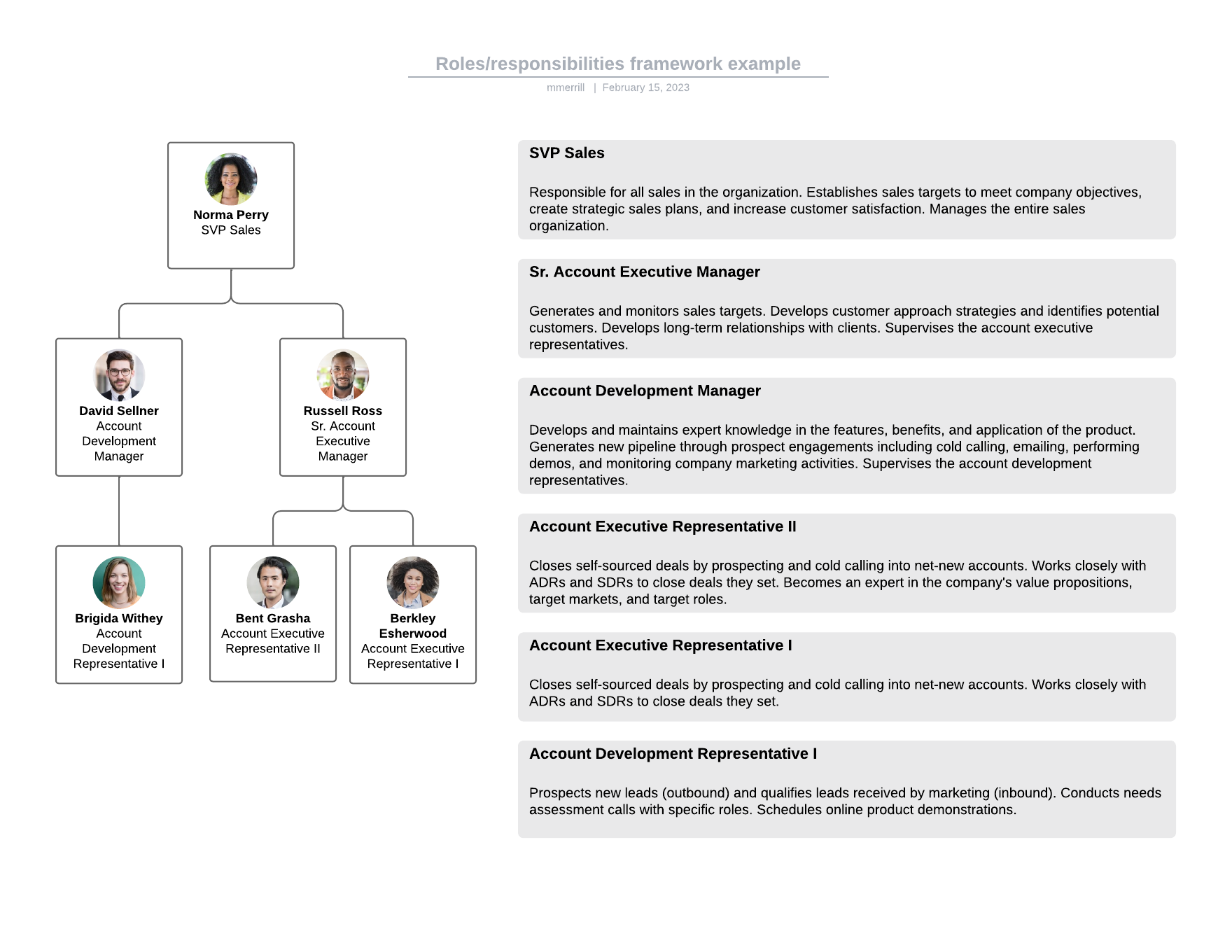
Flat org chart
A flat org chart lets you visualize the reporting structure of companies that have few or no levels between employees and upper management. This usually can be seen in startups and small companies.
A flat structure puts all employees on a more level playing field. So employees generally work with little supervision, have a higher level of responsibility, and are expected to help in making important decisions.
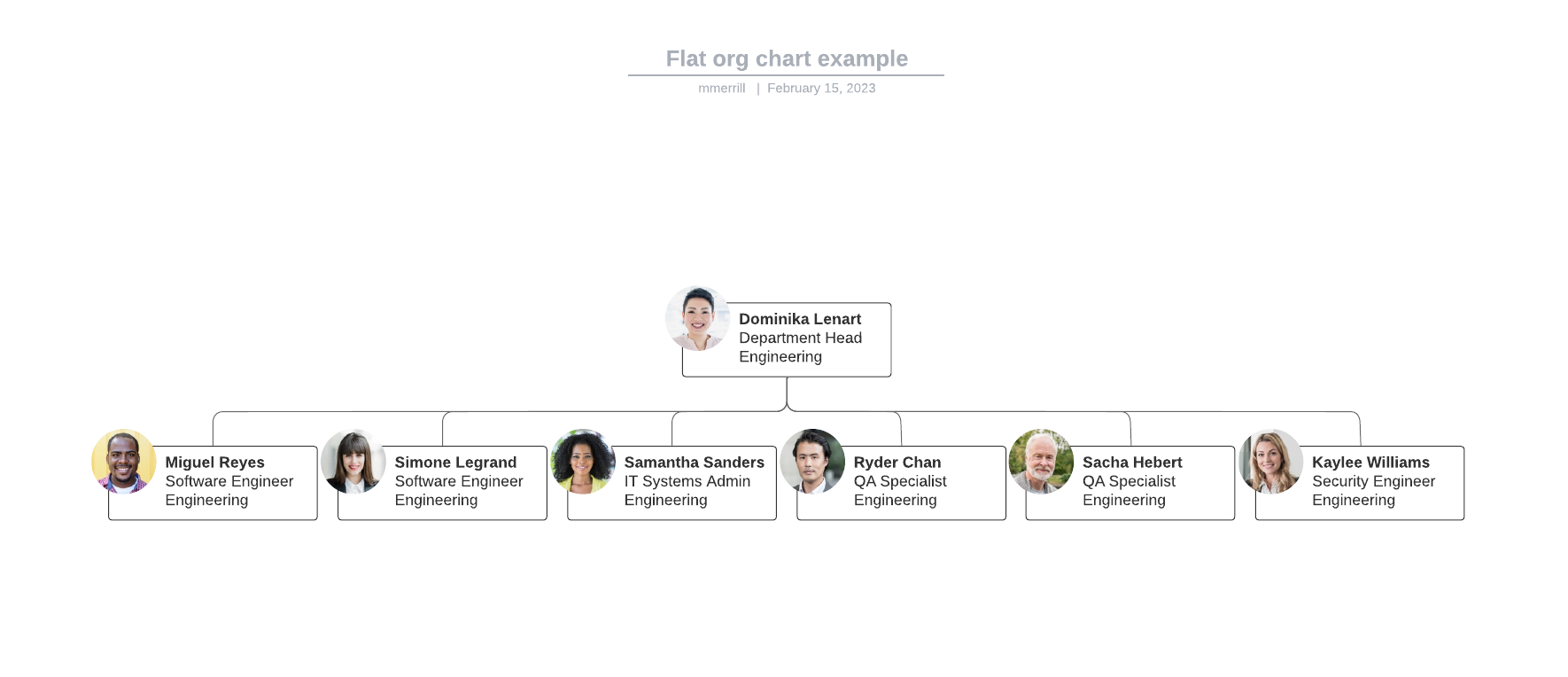
Location-based org chart
This type of org chart is useful for large organizations with employees distributed in various locations and time zones. Creating and maintaining a location-based org chart lets you visualize the hierarchy and reporting structure for individuals and teams no matter where they are located.
You might want to use a location-based org chart when you need to create national or global teams. By knowing the time zones that team members are located in, it’s easier for team leads to schedule virtual meetings where everybody can collaborate together.
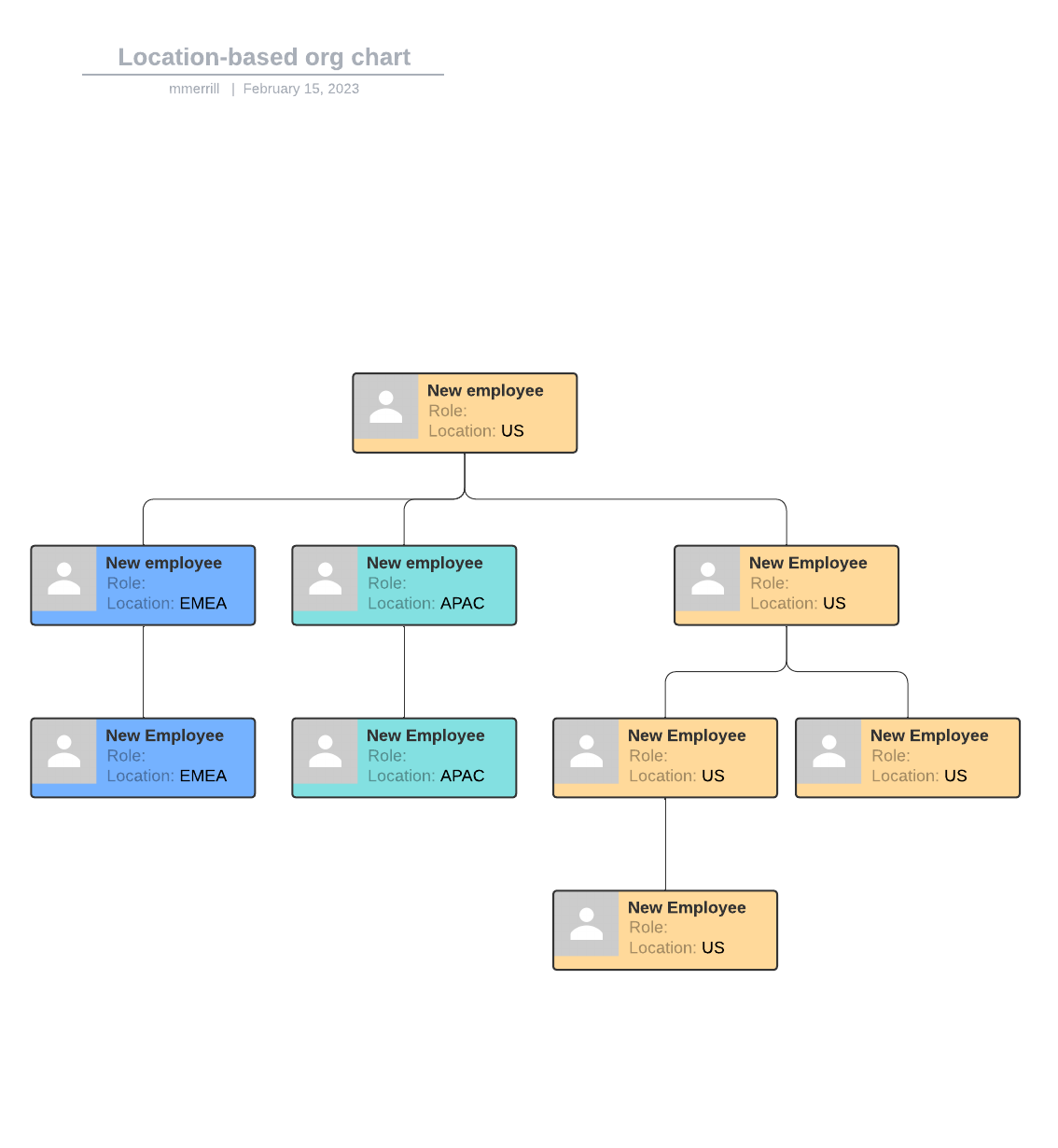
Org chart by growth track
A growth track can help your employees to understand the path and timeline they need to follow to achieve their career goals. When your employees understand that there is real potential for growth in the company, it’s easier to retain them so they don’t go looking for opportunities outside of your business.
When you create org charts based on employee growth plans, you should have a better understanding of how to restructure a team or an organization based on individual goals and ambitions.
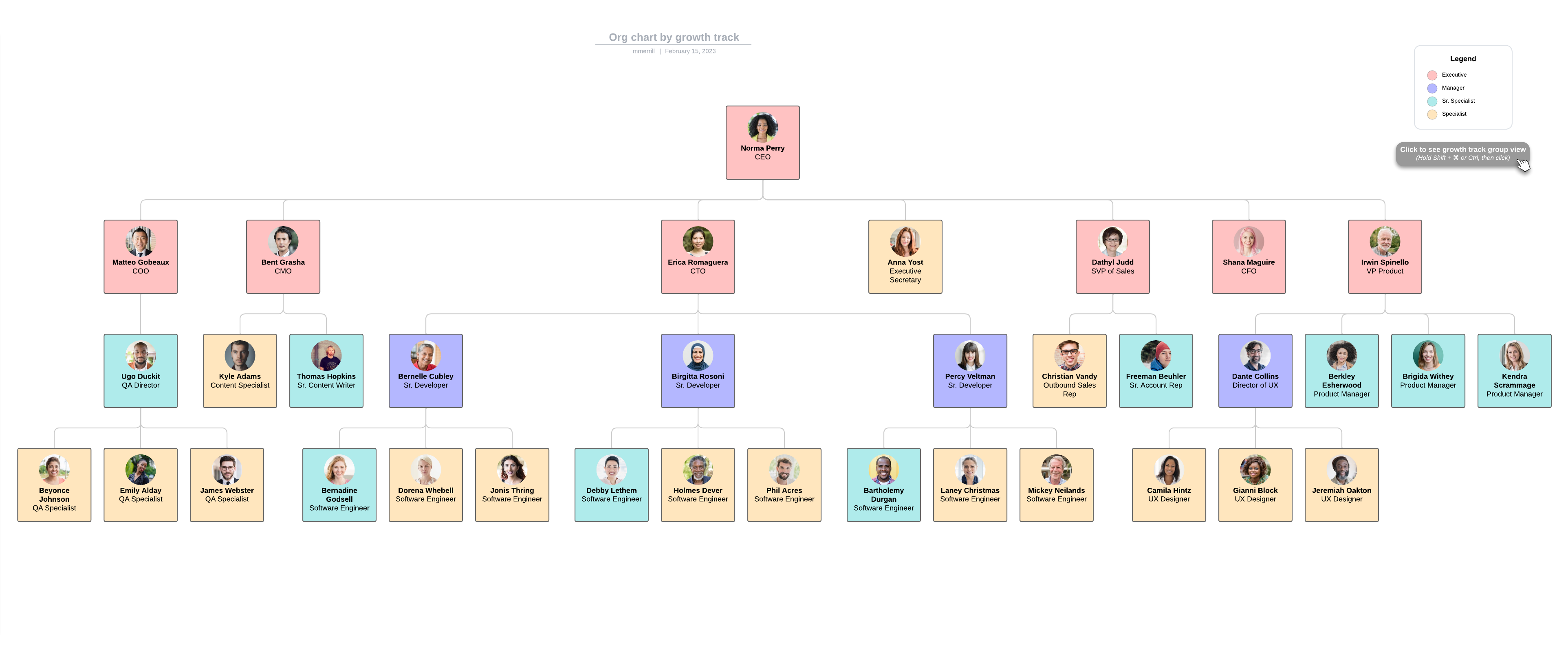
Org chart by cross-functional teams
An org chart by cross-functional teams gives you a visual overview of team member reporting structures. For example, each team member might report to at least a project lead as well as the head of their own functional division. Using this type of org chart to restructure can help you to understand who to contact when you need to request new team members from other departments and divisions.
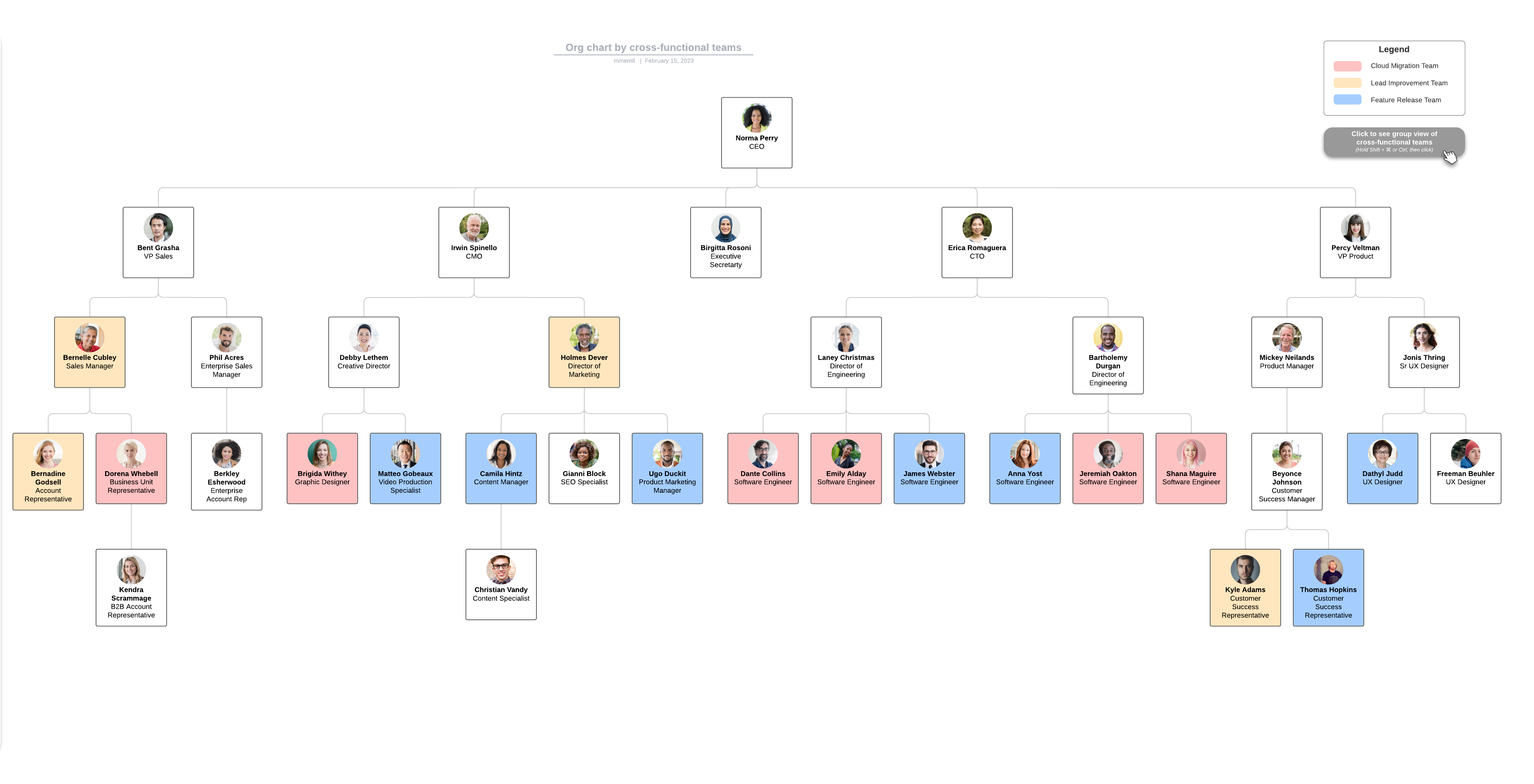
Inverted org chart
The inverted org chart puts the employees at the top and the company leaders at the bottom. This type of organizational structure encourages managers and leaders to support employees and the broader organization rather than approach work to be done top-down.


Explore thousands of other templates for every use case.
Sign up for LucidchartAbout Lucidchart
Lucidchart, a cloud-based intelligent diagramming application, is a core component of Lucid Software's Visual Collaboration Suite. This intuitive, cloud-based solution empowers teams to collaborate in real-time to build flowcharts, mockups, UML diagrams, customer journey maps, and more. Lucidchart propels teams forward to build the future faster. Lucid is proud to serve top businesses around the world, including customers such as Google, GE, and NBC Universal, and 99% of the Fortune 500. Lucid partners with industry leaders, including Google, Atlassian, and Microsoft. Since its founding, Lucid has received numerous awards for its products, business, and workplace culture. For more information, visit lucidchart.com.
Related articles
5 steps to include in the company reorganization process
A company reorganization process requires sensitivity, strategy, and foresight. Include these 5 steps when planning a successful company restructure strategy.
5 Lucidchart templates for small teams
Let’s take a look at which small team templates our Lucid Champions use for brainstorming, organizing, and planning.
10 types of organizational structures (+ org charts for implementation)
The typical org chart looks like a pyramid, but not every company functions along a hierarchical organizational structure. Let’s go through the 10 common types of org structures and reasons why you might consider each of them.
